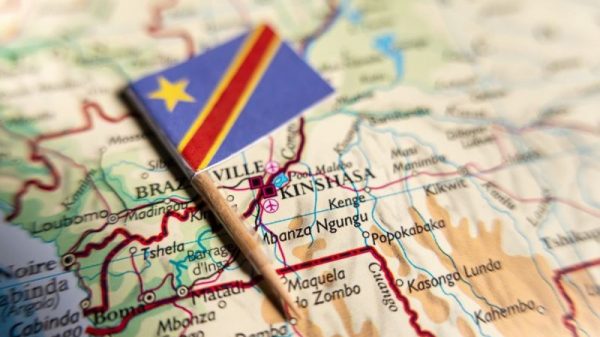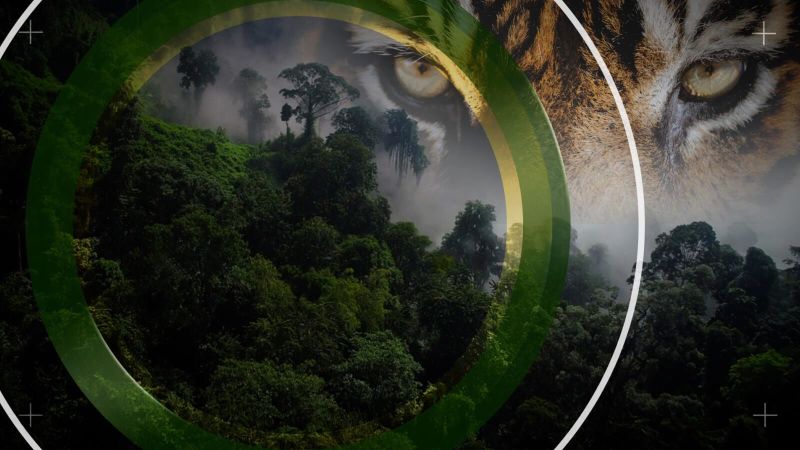At one time, tigers lived across the Eurasian continent, from the Caspian Sea to the Russian Far East, south to the Indonesian islands of Sumatra, Java, and Bali.
Today, though, they live in just 10 nations, occupying a fraction of their former range.
Habitat loss remains a constant threat. That’s why conservationists have teamed up with NASA, the European Space Agency (ESA), and Google Earth Engine to create a new real-time monitoring system for tiger habitats.
Called “TCL 3.0” (standing for “Tiger Conservation Landscapes”), the mapping system provides tiger-range countries with the information they need to identify priority areas, and monitor changes in the habitat and populations, says Eric Sanderson, an ecologist and first author on a study published in Frontiers in Conservation Science in December.
This new method of habitat modeling creates a “much more dynamic” map that will provide vital information at the same pace as decisions about conversation are made, says Sanderson, adding that protecting the tiger’s home habitat is a win for the whole ecosystem.
“(Tiger landscapes) are also producing clean water and helping sequester carbon,” he says. “They’re supporting many, many other species, not just the ones that tigers eat. In that sense, tigers are a really good harbinger of our relationship to the natural world.”
Real-time mapping
This is not the first effort using satellite imagery to map tiger landscapes. The original iteration, called the “tiger conservation unit analysis” was produced in the late 1990s, and the second, TCL 2.0, in 2006.
These previous maps were static, but with improvements in technology, conservationists saw a way to make a real-time system.
Modern mapping uses geographic information systems, known as GIS. It’s a technology that interprets and visualizes spatial data, such as how landscapes have changed over time, population densities, or the distance between different locations.
Satellites provide constant, high-resolution imagery, which is used to analyze suitable landscapes from space. But this doesn’t show what’s going on under the tree canopy, so the second layer of data comes from “human footprint analysis” — data collected from field surveys about the spread of urban areas and human activities. Sanderson and his co-authors gathered two decades’ worth of research, compiling 153,000 observations from more than 500 papers containing data from 2001 to 2020.
Unlike previous versions, the map can be updated when new information becomes available. For example, if a researcher in Assam, India, conducts a survey of tiger numbers in the area, they can share their results on the web-based mapping system, generating a new version of the map.
“The only issue is actually getting people to collect the tiger data and then share it, so that the system can show the effects on other results,” says Sanderson.
The map now shows in detail the expansion or regression of tiger territories, and exactly where has been surveyed when, instantly highlighting data gaps. Sanderson likens it to the kind of analysis commonly done with economic statistics.
“The GDP of your country tells you something at the time it’s measured, but what’s even more important is to see how GDP is changing over time — that’s how you see economic growth or recession,” he says, adding: “We’re trying to do this for tigers in a way that’s never been done before, (for) any species.”
Restoring hope
Between 2001 and 2020, the total area of Tiger Conservation Landscapes (TCLs) declined 11%, according to the study, and further loss could risk the already vulnerable population of around 3,140 individuals.
But Sanderson says the biggest surprise from the research was the amount of available landscape for tigers. “I don’t think people were cognizant about the amount of habitat that’s in this restoration landscape category, or about how much habitat is actually available for tigers that’s unoccupied,” he says.
The study identified 226 “restoration landscapes” — areas that could host tigers, but currently don’t. With sufficient prey and connectivity to existing tiger habitats, the study estimates that it could allow for tiger populations to increase by 50%.
Related article Why a rare image of one of Malaysia’s last tigers is giving conservationists hope
Conservationists can use the map to evaluate which areas have the greatest potential — for example, a restoration area close to an existing habitat could help the population grow if it’s connected through wildlife corridors or reforestation efforts, says Sanderson.
Launched earlier this year, the mapping system code is open source, so “with suitable modifications, this model could apply to other species,” he says, adding that groups at the Wildlife Conservation Society (one of the organizations that provided funding for the project) are already working on similar maps for vulnerable and threatened animals including lions, jaguars and bison.
When Sanderson first began working on tiger conservation decades ago, “there were a lot of predictions that there were going to be no more tigers in the wild anymore,” he says. Now though, “we’re a long way away from that, which is a remarkable thing.”
The mapping system shows the true potential for tiger conservation, which gives him optimism for the future, Sanderson says. “We can turn the corner on tiger conservation.”







































